The Musée de Tahiti et des îles – Te Fare Manaha, located in the town of Puna’auia in Tahiti (French Polynesia), closed its doors in 2018 and reopened them at the beginning of March 2023, under a new name: Te Fare Iamanaha – Musée de Tahiti et des Îles (TFI-MTI). In 2019, one of our past contributors, Iris Rosier, already told you about the renewal of the museum by presenting its temporary exhibition Tupuna > Transit. It allowed the visitors to continue to see and have access to the collection of the museum during its renovation. This project’s aim was to construct a new permanent exhibition building, as well as a new museography. Without further do, it’s time to give you an overview of all these changes!
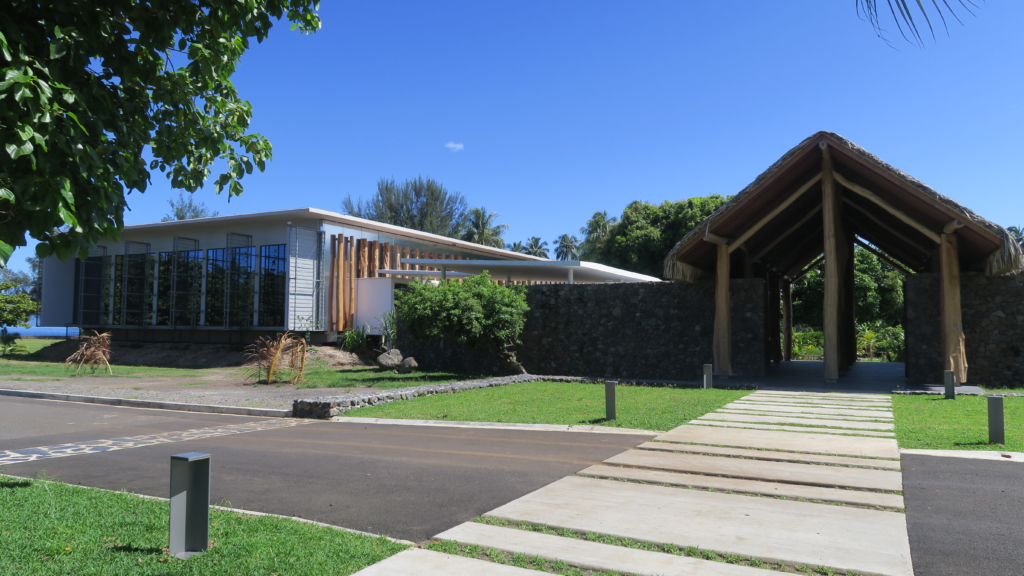
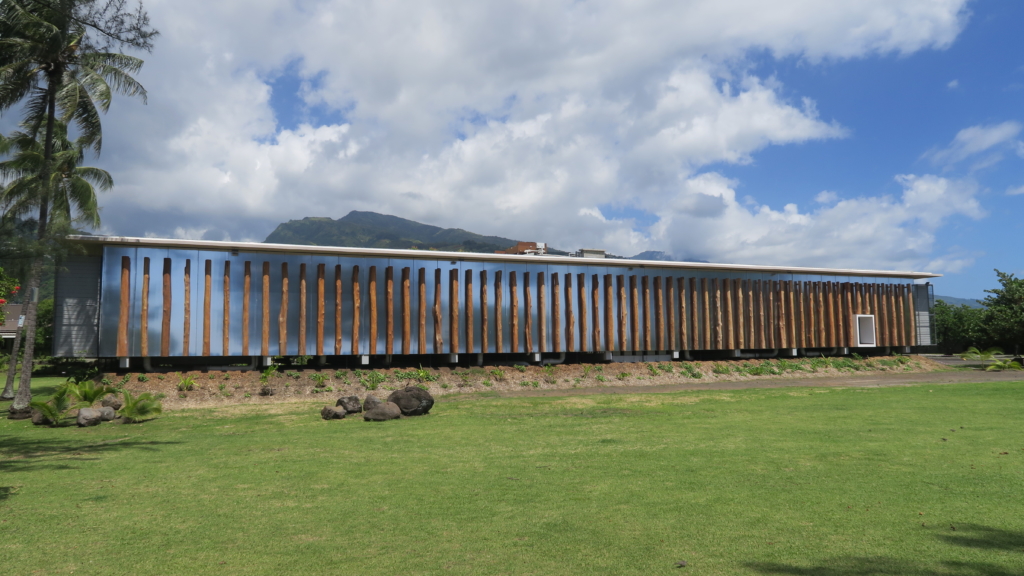
View of the new building for the permanent exhibition, Fare Iamanaha, February 2023 © Garance Nyssen
A song for the inauguration
Although it was pouring rain during the inauguration of the TFI-MTI on the evening of 28th February 2023, it did not stop the guests to enjoy the new museum. Heir of the Musée de Pape’ete, managed by the Société des Études Océaniennes (SEO) created in 1917 by Governor Gustave Julien (1870-1936), the Musée de Tahiti et des Îles was founded by the territorial Assembly of French Polynesia on 7 March 1974.1 While the SEO and its collection (artefacts, natural history specimens, books, archives and photographs) were created in the colonial Tahiti at the beginning of the 20th century, the TFI-MTI is rooted in the cultural renewal context of the 1970s-1980s. At the time, an urban movement led by the Tahitian elite promoted a new Polynesian identity which exceeded local differences.2 At the same time, the French Polynesian government created several cultural institutions such as the museum and Te Fare Vāna’a (the reo tahiti Academy) in 1972, for instance. In 1977, the Puna’auia museum opened and the same year, French Polynesia gained it status of autonomie de gestion (management autonomy status).3
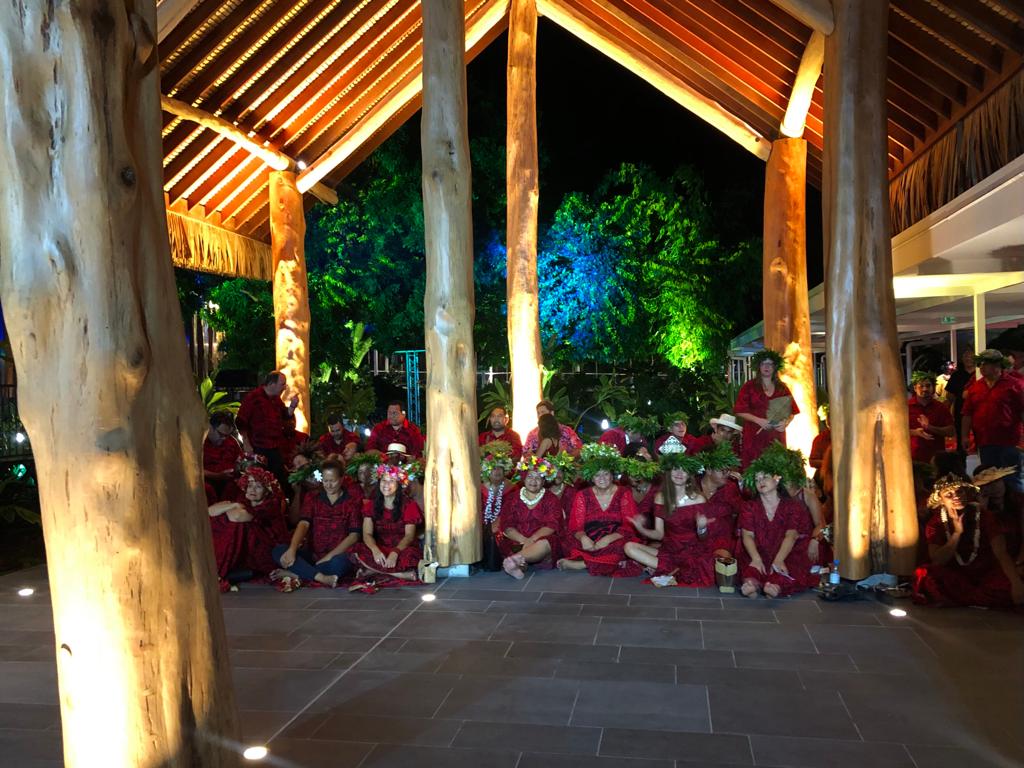
The pupu hīmene gathered for the inauguration of the Fare Iamanaha, 28th February 2023 © Garance Nyssen
But let’s go back to the inauguration night of the TFI-MTI. Opened with songs performed by a Protestant choir and another one, Catholic, the speeches of the museum’s director, Miriama Bono; Puna’auia’s mayor, Simplicio Lissant; Édouart Fritch, then President of French Polynesia4; and High Commissioner Éric Spitz, followed. Heremoana Maamaatuaiahutapusup>5, who was minister of Culture at the time, performed an ’ōrero (speech) before leading the guests to the museum’s entrance. There, they encountered another choir, this time made of the TFI-MTI staff members and people working for other Tahitian cultural institutions under the authority of the ministry of Culture. Tama Pea – the TFI-MTI’s financial manager – led the pupu hīmene (choir) as he created the tārava tahiti invented for the inauguration.6 Formed from a paripari fenua (introduction of the land), Pea recalled the history of Hiti, the geographic entity where the TFI-MTI stands, comprised between the mou’a (mount) ’Orohena and the ava (channel) Nu’uroa. The song mentions the Punaru’u valley, the headquarter of the chief Pohuetea’s chiefdom, where Puna, a famous ’aito (warrior), used to live and protect the valley. The Hō’ā’ā plateau also appears in the song as it is now a well-known place for orange picking. Oranges were introduced in Tahiti by the sailor James Cook (1728-1779) at the end of the 18th century.7 The end of the tārava tahiti mentions the ava Nu’uroa and the lands where the museum was erected: Tefaataufafao, Manua and Vaiparaoa Teparaoa, bought in 1967 by Governor Jean Sicurani (1915-1977). The last two lines of the song are as follow: Ti’aaa hanahana no’oe e/ Te Fare Iamanaha ’api ē. They assert the presence of the TFI-MTI on these lands and its authority and mission regarding the preservation and the presentation of what it hosts and cares for: faufa’a tao’a, tupuna, objects dating back to times before conversion to Christianity and colonisation, and others, testifying of the changes which occurred due to these periods. It also handles more recent paintings and sculptures, dance costumes, photographs, natural history specimens and archives.
Several sources of inspiration enabled Pea to create the tārava tahiti. Among them, memories of discussions he had with past museum staff members of the museum who were guardians of Hiti history, as well as the toponymic Hiti map, created by former TFI-MTI’s archivist, Vairea Teissier. All in all, this song aimed at incorporating the new museum building in time and space. The creation and the performance of the tārava tahiti are the results of relationships with ancestors, elders, colleagues, and places with which the museum is related to. I thus couldn’t have talked about the new permanent exhibition of the TFI-MTI before introducing its tārava tahiti.
A short visit at the Fare Iamanaha
The new building of the permanent exhibition was created by the architect Pierre-Jean Picart, well-known in French Polynesia for his hotels, among other works. Pairing with the Parisian scenographer Adrien Gardère, they won the contest for the museum’s renewal and refurbishment, launched by the TFI-MTI and the French Polynesian government in 2016. The 1970s little fare (houses) which used to house the permanent exhibition were replaced by a long rectangular building covered by metallic plaques and ’aito trunks (iron wood, Casuarina equisetifolia).8 Large bay windows are at both ends of the building which are only complemented by two other windows within the long walls. Put at the beginning of the tour itinerary, one of these windows overlooks the mou’a ’Orohena and the other the ava Nu’uroa, nods to two major places of Hiti.
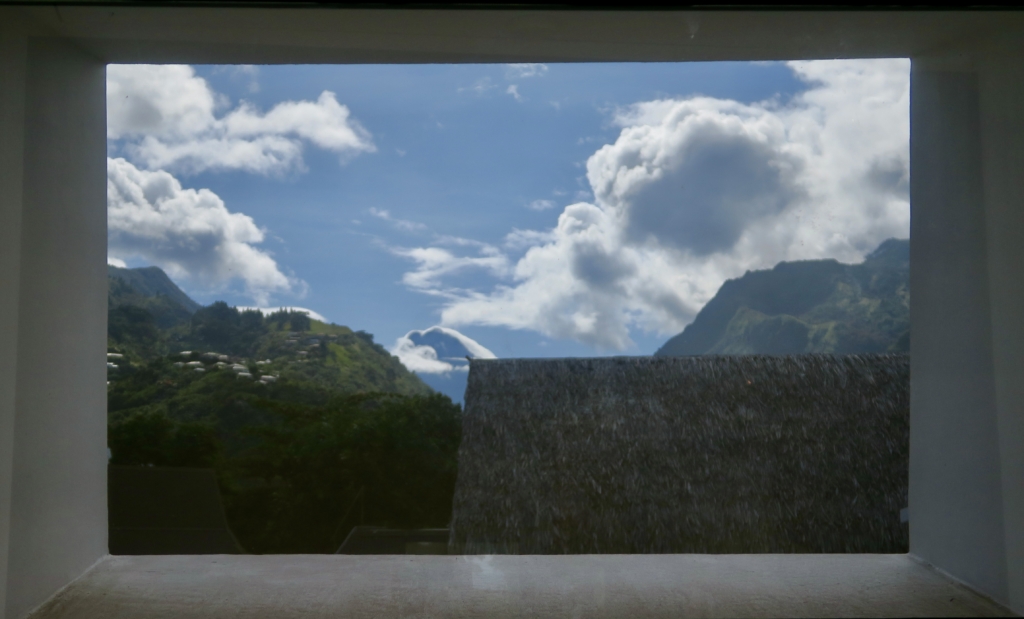
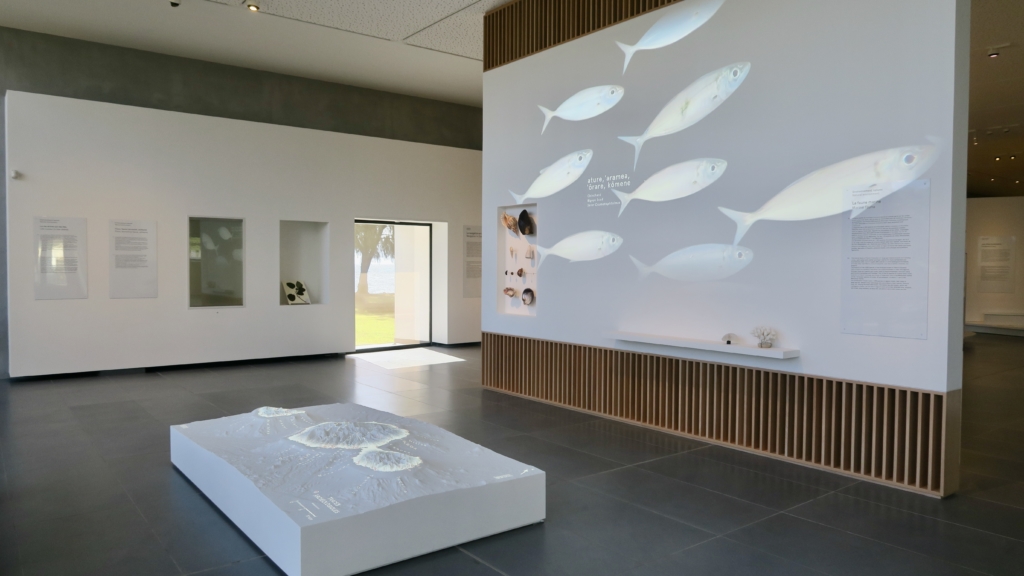
The two windows which overlook the mou’a ’Orohena and the ava Nu’uroa, Fare Iamanaha, March 2023 © Garance Nyssen
The visit starts with the same themes as in the previous museography: the geological formation of the islands, fauna, and flora, explained with two videos and a digital tablet. They are also accompanied by few specimens from the natural history collection. Different maps about the old chiefdoms, the first churches or the current density of population are shown on a model of Tahiti and Mo’orea islands.
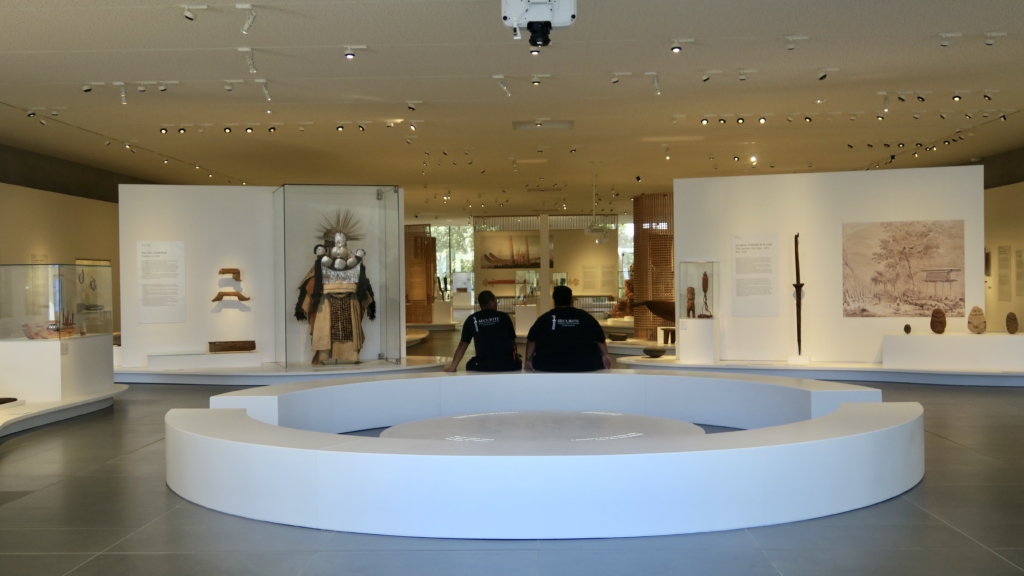
View of the display material which tells the story of the creation of the world by Ta’aroa, Fare Iamanaha, March 2023 © Garance Nyssen
Visitors then dive into the story of the creation of the world by the god Ta’aroa. The story is written on a big white circle, both in French and English. However, the best way to make the most of this experience is by using an audioguide, as it allows you to hear the story in reo tahiti. This space aims at showing the continuity of the importance of orality in today’s French Polynesia. The museum team hopes to soon add other tales about the creation of the world on the audioguides: those from the Tuāmotu, Magareva (Gambier Islands), the Tuha’a Pae (Austral Islands) and Enua Henata (the Marquesas).
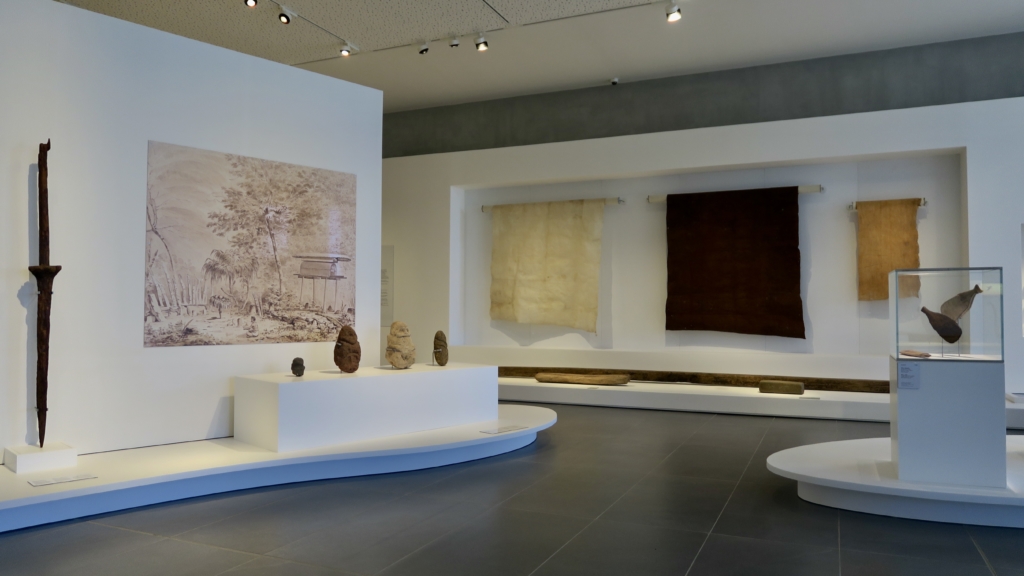
View of the spaces dedicated to the notion of sacred and to tapa making, Fare Iamanaha, March 2023 © Garance Nyssen
Around this space, you are given several options. So far, I did not mention it, but you are free to visit the museum how you wish, as there are no partitions nor specific room order. You thus now have the choice between a space dedicated to navigation and another one to the peopling of Oceania and French Polynesia. Other spaces address tapa (textile made from beaten inner tree bark) making, the sacred, death, fishing, daily tools, and food.
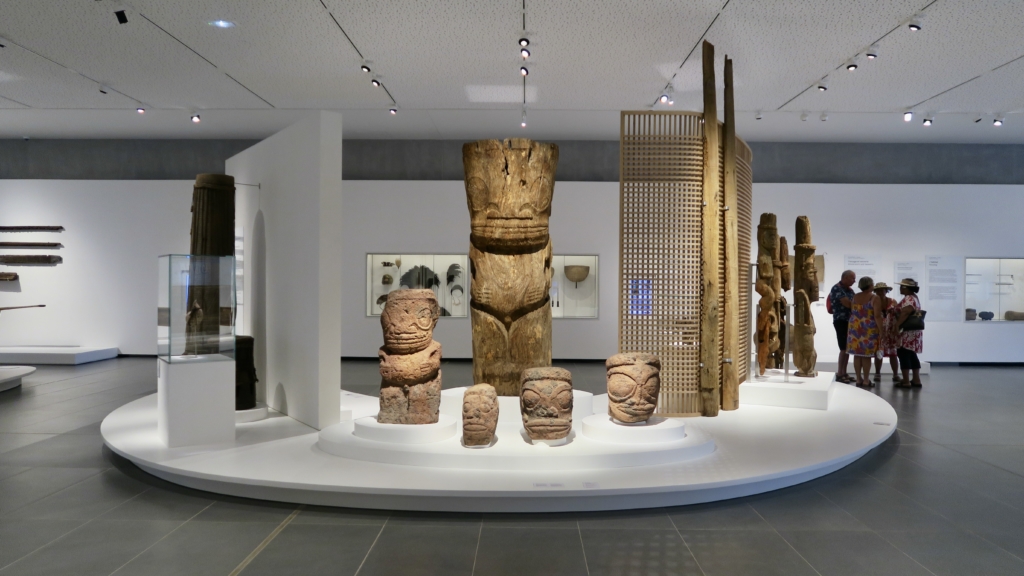
View of the space dedicated to Enua Henata, Fare Iamanaha, March 2023 © Garance Nyssen
The main part of the visit is dedicated to the five different archipelagoes which compose French Polynesia. Even though relationships between them have been existing for a long time, they were administratively reunited because of the French colonisation. While underlining their resemblances, the new permanent exhibition aims at highlighting each of them and their specificities, something that the past permanent exhibition did not do.9 Tuāmotu, Enua Henata, Tōtaiete, Thua’a Pea and Magareva thus all have their own space. This visit of the archipelagoes is punctuated by other themes like tattooing, sports and games, music, and dances. It ends with a big white wall presenting the presumed fragment of the so-called Wallis maro 'ura. Made of tapa, remains of feathers, vegetal fibers, and remnants of a red British pennant, it symbolises, according to the museum’s team, the transformations which occurred in Tahiti and in the surrounding islands, following the first encounters with Westerners.
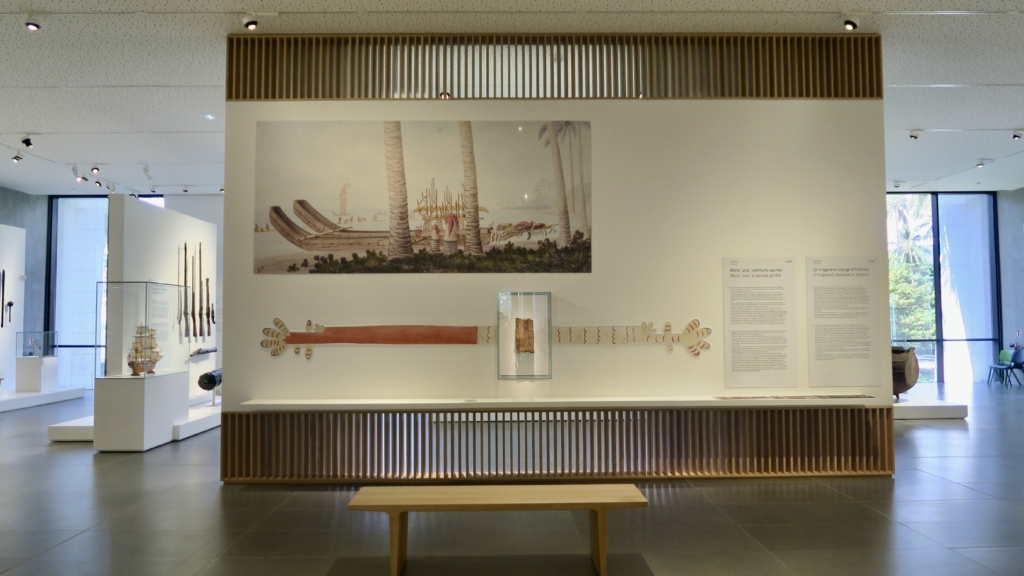
The ”New Era”, the space dedicated to the presumed fragment of the “Wallis maro ’ura”, Fare Iamanaha, March 2023 © Garance Nyssen
Lastly, behind this wall is a space dedicated to objects coming from other Te Moana Nui h Hiva archipelagoes and countries.10 Another space tackles the changes which occurred in the Polynesian material culture after the arrival of Westerners. You can thus see metal artefacts or new types of objects (glasses for instance) which are put in dialogue with video-fictions recounting, for example, the destruction by fire of past religious objects by missionaries and new converts.
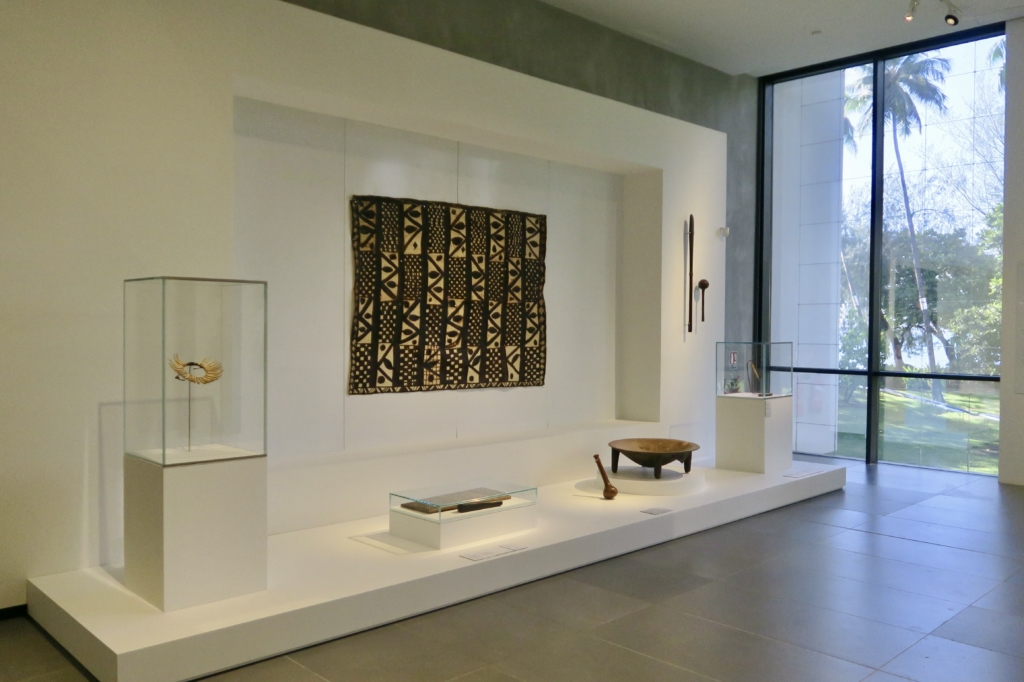
The space dedicated to other archipelagoes within Moana nui a Hiva, Fare Iamanaha, March 2023 © Garance Nyssen
As previously mentioned, the heart of the TFI-MTI collection comes from the Musée de Pape’ete, managed by the SEO. Brother Alain (Joseph Guitton) was the first person to give his collection to the Society. His collection was created from the gifts he received from his pupils during his stay in French Polynesia. Other collections were added later, such as J.F.G Stokes’ collection in 1928, who used to be curator of the Bernice P. Bishop Museum (Hawai’i). Exchanges of objects took place with other museums in the Pacific, such as the Dunedin museum in Aoteaora (New-Zealand). In the 1960s, the collection grew much bigger. For instance, Aurora Natua (1909-1992) – secretary, curator, and archivist at the SEO – ensured that every scientific expedition, including archaeological missions, legally undertook their research and deposited the found artefacts at the museum.11 In 1978, the institution acquired parts of James Hooper’s (1897-1971) collection, who was a British collector, thanks to the help of his heirs. Today, the TFI-MTI’s collection is still expanding, often thanks to donations made by Polynesians themselves.12
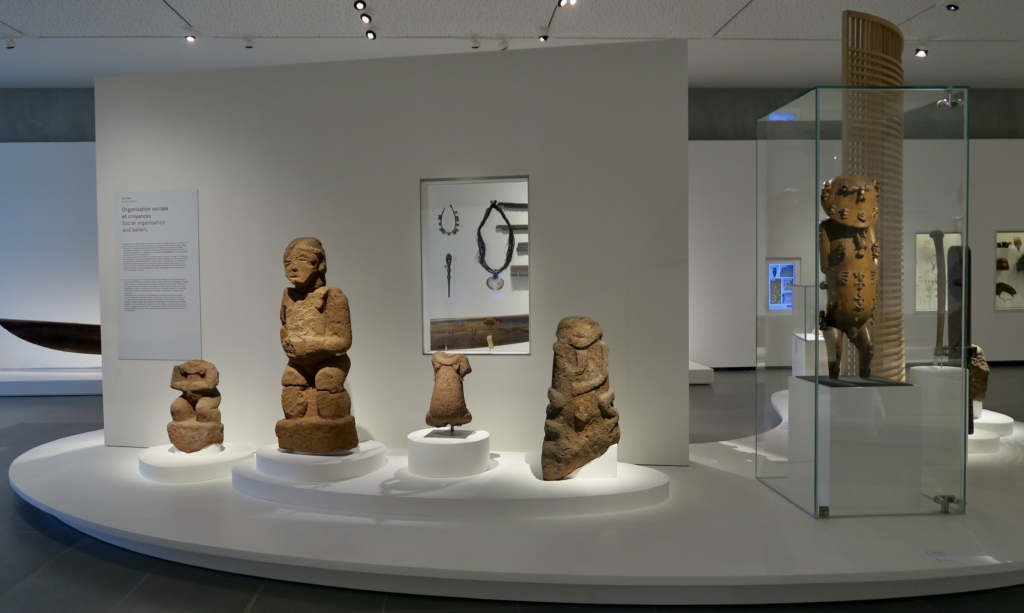
View of the space dedicated to the Tuha’a Pae, Fare Iamanaha, March 2023 © Garance Nyssen
Prestigious returns
The new permanent exhibition gathers less objects than the previous one. The scientific team of the museum and its director explain this choice by saying that the visitors will be able to better see and access the chosen objects. On top of that, between artefacts from the TFI-MTI collection, other witnesses of the past slipped into the permanent exhibition. The British Museum (London, UK), the musée du quai Branly-Jacques Chirac (Paris) and the Museum of Archaeology and Anthropology of the University of Cambridge loaned and deposited eighteen objects to the TFI-MTI. An ancestor or god figure (Rongo?) from Magareva; A’a from Tuha’a Pae; a maro kura from Anaa (Tuāmotu) ; a too mata (an aide-memoire for genealogy recitations) and a ta’avaha headdress with its ear ornament from Enua Henata; as well as a tattooing mallet, two poe (ear ornaments), a pahu (drum), a lintel, a to’o (god repository), a mōrī tuitui (lamp), a ahu heva (mourner’s costume), a ti’i (ancestor repository), a taumi (pectoral), a penu (pounder) and the presumed fragment of the “Wallis maro ’ura” (sacred chiefly belt) from Tōtaiete are back to French Polynesia for two or three years.13
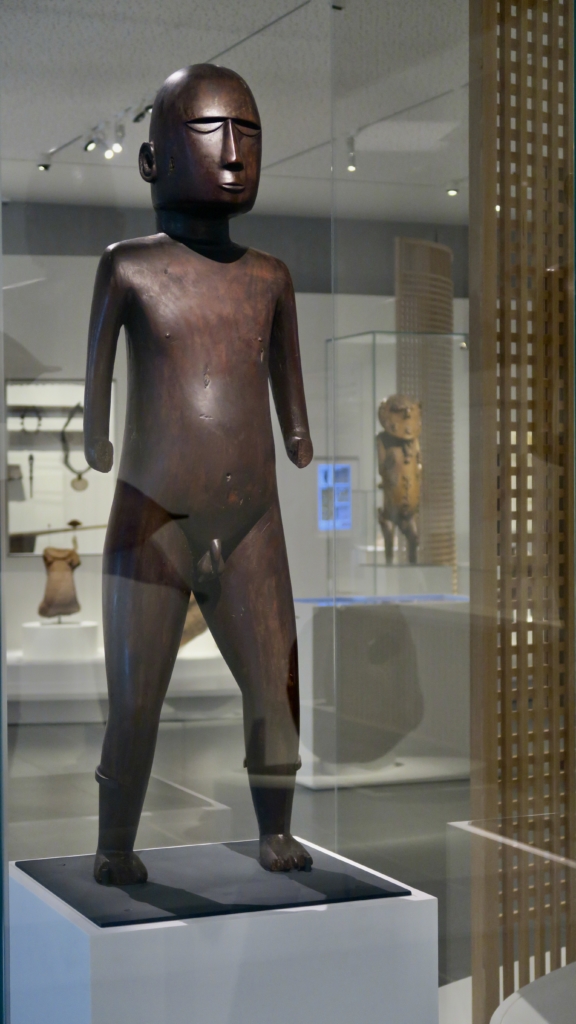
Two of the objects loaned by the British Museum. On the foreground is an ancestor or god figure (Rongo?) from Magareva and on the background you can distinguish A’a from Rurutu (Tuha’a Pae), Fare Iamanaha, March 2023 © Garance Nyssen
The renewal of the museum is not just architectural and scientific. It is accompanied by a project of revitalisation of the place allowed by these temporary returns of artefacts which are usually housed in mainland France and foreign museums. This project has been in the TFI-MTI’s directors minds for a long time, but it has only been encouraged recently, by the ministry of Culture Maamaatuaiahutapu. Since 2015, the TFI-MTI’s team has been creating a list of artefacts to bring back to French Polynesia. The reopening of the museum was a beautiful occasion to bring this project to fruition. Maamaatuaiahutapu, the previous minister of Culture, considers that when these objects come back, they “recharge themselves in mana”. When they will go back to Paris, London and Cambridge, they will become “ambassadors” of French Polynesia. This dynamic vision of returns goes perfectly with the TFI-MTI’s guidelines as it hopes that these successive returns will bring more Polynesian visitors to the museum.
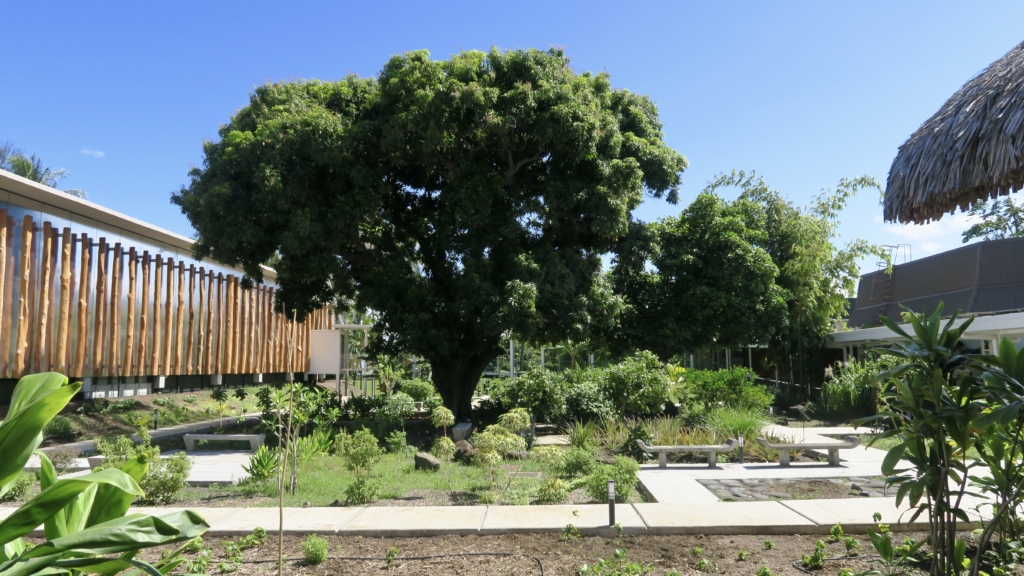
View of the Fare Iamanaha’s garden, March 2023 © Garance Nyssen
Of course, this space is accompanied by a garden, also renovated. Created around a large mango tree, it gathers plants grown and used in all the five French Polynesian archipelagos. Even if the TFI-MTI is a bit far from Pape’ete, the Fare Iamanaha is profoundly alive. Guided tours are often organised, and the audioguides and digital tablets are endless additional resources for your visits. Temporary exhibitions are still organised and the project of temporary returns of Polynesian cultural assets dispersed across the globe is a promise to ensure the dynamism of the place.
Garance Nyssen
My deepest acknowledgements go to the entire museum team. Māuruuru roa. I cannot name everyone here so for now, I will mention Miriama Bono, Tamara Maric, Marine Vallée and Tama Pea for the time they kindly took for me and my research during the four months leading up to and seeing the reopening of the Fare Iamanaha.
Image à la une : Vue du Fare Iamanaha, Mars 2023 © Garance Nyssen
1 Millaud Hiriata et Véronique Mu-Liepmann, 2001. Les collections du Musée de Tahiti et des Îles, Tahiti, Punaauia : Musée de Tahiti et des Îles – Te Fare Ia Manaha.
2 Saura Bruno, 2008. Tahiti Mā’ohi : culture, identité, religion et nationalisme en Polynésie française, Tahiti : Au vent des îles.
3 In 1984, French Polynesia gained the autonomie interne (internal autonomy status). This status was reinforced in 1964 and 2004. As a collectivité d’outre-mer (overseas collectivity), it allows French Polynesia to have a local government with a territorial Assembly which votes local laws and manage the territory’s finance.
4 On 16 and 30 April 2023, elections were held in French Polynesia, which led to the election of a new President, Moetai Brotherson from the Tavini huiraatira (Separatist party).
5 The current minister of Culture is Eliane Tevahitua. She is also Vice-President, in charge of Higher Education, the Environment, Land, Arts and Crafts and in charge of institutional relations.
6 Tārava tahiti are songs (hīmene) which gather nine different vocals. Coming from Tahiti, it differs from the tārava raromata’i from the Leeward Islands (Raromata’i) and the tārava tuha’a pae from the Austral Islands (Tuha’a Pae). See Colson, 2014 and Ku’uleialoha Stillman, 1993.
7 Bodin Vonnick, 2006. Tahiti. La langue et la société, Papeete, Tahiti : ’Ura : 226-227.
8 The past permanent exhibition can be seen on the Fare Iamanaha’s website: https://www.museetahiti.pf/visite-virtuelle/, seen on 06/07/2023.
9 Bono Miriama et Stéphanie Leclerc-Caffarel, 2022. « Entretien avec Miriama Bono. Le musée de Tahiti et des îles – Te Fare Manaha », Gradhiva, 34 : 147-161.
10 Saura Bruno, 2022. « Une appellation transnationale pour l’Océan Pacifique : Te moana nui a kiwa (Nouvelle-Zélande) – Te moana nui a Hiva (Tahiti) », Archivio antropologica mediterraneo, Anno XXV, n°24 (2) [en ligne].
11 Dotte Sarout Émilie, Tamara Maric, Guillaume Molle, 2022. « Aurora Natua and the Motu Paeao site: Unlocking French Polynesia’s islands for Pacific archaeologists», in Hilary S. Howes, Tristen Jones, Matthew Spriggs (dir.), Uncovering Pacific pasts: histories of archaeology in Oceania, Canberra, Australia : ANU Press : 469-487, p.477.
12 On the history of the museum, see Millaud and Mu-Liepmann, 2001; Vallée, 2019; Bono et al., 2022.
13 The presumed fragment of the « Wallis maro ’ura” is the only object which will stay indefinitely to Tahiti as it is a deposit from the musée du quai Branly-Jacques Chirac. A transfer of few responsibilities upon the object from the Parisian museum to the TFI-MTI was agreed but not transfer of property was given.
Bibliography:
- BODIN Vonnick, 2006. Tahiti. La langue et la société, Papeete, Tahiti : ‘Ura.
- BONO Miriama, Tamara MARIC, Marine VALLÉE, Vairea TEISSIER, Tara HIQUILY Mahinatea GATIEN, 2022. « Repenser le musée de Tahiti et des Îles – Te Fare Manaha : genèse, histoire, bilan et perspectives d’un projet de rénovation », Journal de la Société des Océanistes, 155 : 269-282.
- BONO Miriama et Stéphanie LECLERC-CAFFAREL, 2022. « Entretien avec Miriama Bono. Le musée de Tahiti et des îles – Te Fare Manaha », Gradhiva, 34 : 147-161.
- COLSON Geoffrey, 2014. « A Fresh Approach to Transculturation in Contemporary Music in Tahiti », Eras, vol.16, n°1 : 1-22.
- DOTTE SAROUT Émilie, Tamara MARIC, Guillaume MOLLE, 2022. « Aurora Natua and the Motu Paeao site: Unlocking French Polynesia’s islands for Pacific archaeologists », in Hilary S. HOWES, Tristen JONES, Matthew SPRIGGS (dir.), Uncovering Pacific pasts: histories of archaeology in Oceania, Canberra, Australia : ANU Press : 469-487.
- GRAINDORGE Camille, 2021. « Maro ‘Ura. Un trésor polynésien : la mystérieuse trajectoire d’un objet sacré », Casoar, https://casoar.org/2021/12/22/maro-ura-un-tresor-polynesien-la-mysterieuse-trajectoire-dun-objet-sacre/, dernière consultation le 05/06/2023.
- KU’ULEIALOHA STILLMAN, 1993. « Prelude to a Comparative Investigation of Protestant Hymnody in Polynesia », Yearbook for Traditional Music, vol. 25: 89-99.
- MILLAUD Hiriata et Véronique MU-LIEPMANN, 2001. Les collections du Musée de Tahiti et des Îles, Tahiti, Punaauia : Musée de Tahiti et des Îles – Te Fare Ia Manaha.
- NYSSEN Garance, 2022. Ethnographie d’une exposition. Maro ’ura. Un trésor polynésien au musée du quai Branly-Jacques Chirac, mémoire de Master en anthropologie, Université Paris Nanterre.
- ROSIER Iris, 2019. « Tupuna > Transit », Casoar, https://casoar.org/2019/09/04/tupuna-transit/#_ftn3, dernière consultation le 05/07/2023.
- SAURA Bruno, 2022. « Une appellation transnationale pour l’Océan Pacifique : Te moana nui a kiwa (Nouvelle-Zélande) – Te moana nui a Hiva (Tahiti) », Archivio antropologica mediterraneo, Anno XXV, n°24 (2) [en ligne].
- SAURA Bruno, 2008. Tahiti Mā’ohi : culture, identité, religion et nationalisme en Polynésie française, Tahiti : Au vent des îles.
- TEISSIER Vairea, 2010. Hiti, frontière première et originelle, carte toponymique, Puna’auia, Service de la culture et du patrimoine (Polynésie française).
- VALLÉE Marine, 2019. From Beaches to Walls, and Beyond: Collecting and Displaying ‘French Polynesia’, thèse en Histoire de l’art, Université d’Auckland.
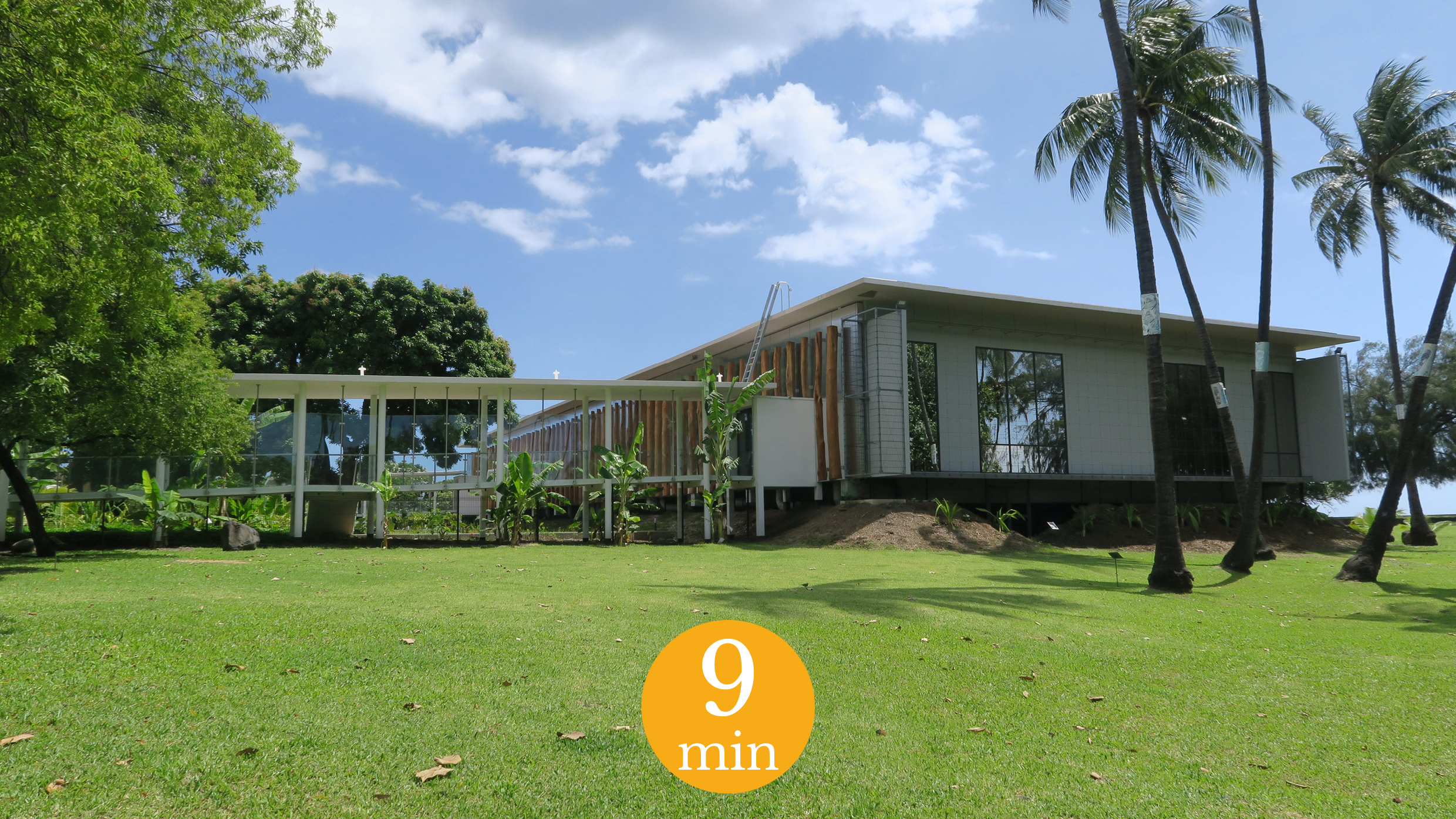
2 Comments